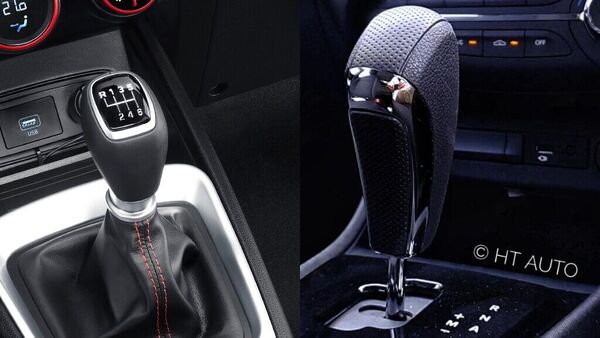- While both AMT and iMT are mechanically very similar to manual transmission technology compared to other automatic transmission systems, the most apparent difference dividing the two dual-pedal techs is the driver input.
–>
While both AMT and iMT are mechanically very similar to manual transmission technology compared to other automatic transmission systems, the most appa
…

Demand and sales for automatic transmission-equipped passenger vehicles rising fast across the world. The ease of driving, practicality and safety along with the improved reliability of this technology have propelled the growth of automatic transmission. This technology becomes most effective in congested bumper-to-bumper traffic conditions in cities where frequent clutch pressing and gear shifting make driving a manual car stressful for a driver.
In the automotive market, there are various types of automatic transmission technologies available, which include the AMT, iMT, CVT, DCT etc. In the Indian market, AMT has become immensely popular owing to various factors. These include ease of driving, availability of manual shifting when required, affordability, and almost the same or even better fuel economy compared to manual transmissions. In recent times, iMT too is finding an increasing footprint.
Also Read : Maruti Suzuki Ignis to Hyundai Exter: Top 5 automatic cars under ₹10 lakh
While both AMT and iMT are mechanically very similar to manual transmission technology compared to other automatic transmission systems, the most apparent difference dividing the two dual-pedal techs is the driver input. Despite coming with a similar work principle based on the dual-pedal theory, the AMT and iMT are very different from each other in the way they function.
Here is an explainer elaborating the differences between the AMT and iMT.
Automated Manual Transmission (AMT)
Commonly known as AMT Automated Manual Transmission is a technology that automates manual gear shifting. AMT not only removes the clutch pedal like the iMT but also relieves the driver of the responsibility of shifting gears himself or herself. Overall, the AMT is meant to reduce the driver input to a bare minimum. AMT comes equipped with a host of sensors, actuators and other mechanical components that get instruction from the ECU of the car, which comes pre-programmed. In this technology, the only interaction between the system and the driver happens through the accelerator and brake pedal.
Intelligent Manual Transmission (iMT)
The iMT stands for Intelligent Manual Transmission. This system also removes the clutch pedal reducing a major interaction point for the driver. This system comprises an intelligent intention sensor, a hydraulic clutch actuator, and an electronic transmission control unit. These components are put together with a conventional H gearbox which works with the engine. In a nutshell, the iMT comes sans a clutch pedal and uses sensors to use the in-built clutch, while the power of gear shifting remains in the driver’s hand.
AMT vs iMT: Cost
The basic costs of manufacturing iMT and AMT are similar while maintenance costs for AMT are a little more than iMT. This is because the AMT comes with more components than iMT. In the long run, maintenance costs for the iMT are less than for a high-end AMT system.
AMT vs iMT: Fuel economy
AMTs come tuned from the factory to shift gears at the pre-programmed right which ensures consistent fuel economy. On the other hand, iMT is essentially manual gear-shifting technology with an automatic clutch. This on paper, offers better fuel economy than manual cars. However, the fuel efficiency of iMT cars depends largely on driving style and how frequently drivers shift gears at the ideal RPMs.
AMT vs iMT: Driving experience
AMTs offer a smooth and highly convenient driving experience in congested urban traffic conditions, where frequent clutch press and gear shifting are required, but the slight lag in changing gears is one of the common complaints about them. Also, the lag in power delivery during sudden requirements is another complaint about the AMTs.
On the other hand, in the case of iMTs, power is engaged the moment the gear shift is initiated by the driver. This makes smooth power delivery and gear shifting compared to AMTs.
To start driving an AMT car, all you need to do is start the engine and move the gear shifter from N (Neutral) to D (Drive). The AMT will automatically shift the gear from one to the next depending on the speed of the vehicle and the engine RPM. While reversing the car, you just need to shift the gear stick to the R (Reverse) position. In this whole process, no clutch pressing or manual gear shifting is required.
While the similarity of not having a clutch pedal is there in iMT as well, it allows the driver to shift gears, offering greater control of the vehicle. The driver decides when to upshift or downshift.
First Published Date: 04 Apr 2024, 10:14 AM IST
